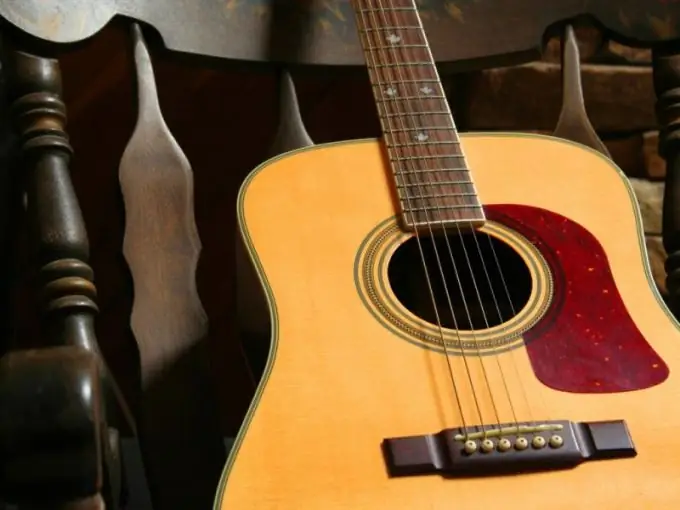The classical school of guitar playing is much less popular today than its simpler, amateur counterparts. A direct consequence of this is the almost complete withering away of the staff: most guitarists prefer to work with tablatures, which are easier to learn and more convenient to use.

Instructions
Step 1
Remember the basic concepts. First of all, the names of the strings: the first is not the upper one (which would be logical), but, on the contrary, the thinnest, lower one. The remaining strings are counted from bottom to top, so that the bass string is sixth. Pay attention to the frets - metal saddles along the entire length of the neck. Pinching the string between the end of the fretboard and the first nut means “at the first fret”. Between the first and the second - "on the second".
Step 2
Open any tablature. You will see six lines: they symbolize strings. The first string (the thinnest) is written in the first line, the second - in the second, and further down the list. There are numbers on the strings. Each digit is a fret that must be clamped before extracting a sound. You need to read the tablature from left to right on all six strings at the same time.
Step 3
Let's say the leftmost digit is zero, located on the fifth line; then there is a column of numbers: "0" on the first line, "2" on the second and "2" on the third. First, you follow the leftmost pointer: you have to pluck the open ("fretted") fifth string. The second step is three digits at once. If the pointers are directly below each other, then you need to extract the sound from several strings at the same time: you clamp the second and third strings at the second fret and extract the sound from the first, second and third. Next, you need to take the third digit from the left, look at which fret it is clamped, then extract the sound. And so, until the tablature ends.
Step 4
In the tabs, you can find notes about the special techniques used in the game. If two numbers stand side by side and are separated by a letter, it is legato. For example, 2h3 means that you need to hold down a string at the second fret, play a sound, then use your free finger to “tap” the same string at the third fret, which will trigger an extra note. Two digits separated by a slash mean "slide": 10/12/10 stands for "Squeeze on the tenth, without releasing, slide your finger to the 12th and return it back, then release."






